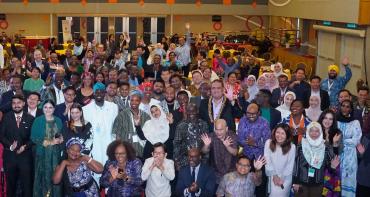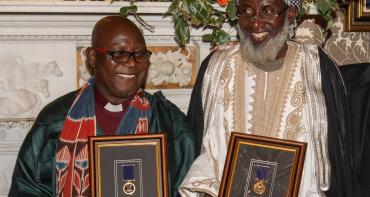The Commonwealth advocates sport as a vehicle for development and peacebuilding. Given its popularity and unequivocal prominence in the rich tapestry of the Commonwealth’s heritage, sport has huge potential to drive social change – and accelerate gender equality – across member states.

This blog is part of the Commonwealth’s ‘16 Days of Actions’ series, designed to showcase multi-disciplinary national solutions in addressing violence against women and girls. These proven solutions build on the collective experience of the 54 member countries – representing one-third of humanity – which can be replicated elsewhere to create a safer world for every woman and girl. Read the full series here.
The Commonwealth advocates sport as a vehicle for development and peacebuilding. Given its popularity and unequivocal prominence in the rich tapestry of the Commonwealth’s heritage, sport has huge potential to drive social change – and accelerate gender equality – across member states.
Not only can sport raise awareness of gender-based violence, but it can help deliver solutions through well-designed policies and programmes across multiple sectors, including sport itself.
But despite the fact sport promotes ethical values of fair play, gender-based violence also occurs within sport. This violence can be perpetrated among peer-athletes, between coaches and athletes, or between others in the sector. However, by implementing targeted, evidence-based policies and programmes, sport can address its own violence as well as contribute to wider gender equality and empowerment in and through sport.
Gender mainstreaming
In May 2018, Botswana hosted the 7th International Working Group on Women and Sport World Conference on Women and Sports. Through the Ministry of Youth Empowerment, Sport and Culture Development, Botswana requested Commonwealth technical assistance to develop a strategy, policy and implementation plan for gender mainstreaming in sports. Gender Links, a South African organisation based in Botswana, also provided support.
Gender-based violence was identified as a key barrier to gender equality in sport by the analysis. It was noted that despite
The consultation highlighted inadequate funding and resourcing to support civil society advocacy groups working on the issue. At the institutional level, the absence of a central agency responsible for gender-based violence in Botswana was recognised as a critical obstacle, and a coalition approach with a lead agency was suggested as a viable solution.
Analysis of national policy as well as international and regional policy related to human rights and gender (1), led to equality, inclusivity, safety, empowerment and engagement becoming core principles of the strategy. However, rather than focusing solely on the integration of these principles within sport, the strategy identified gender equality and inclusion in and through sport in Botswana as the overarching vision.
Sport for gender equality
Botswana’s plan is in line with the
Celebrating its 25th anniversary this year, the
Principle 2 of the UN initiative’s framework aims to prevent and respond to violence against women and girls in and through sport. The Sport and SDG Indicators, developed through a global initiative led by the Commonwealth to measure the contribution of sport to the SDGs, contains six indicators which can be used to report on this principle.
Action at scale
The
In response to COVID-19, the Secretariat also partnered with Pro Sport Development and the Martha Farrell Foundation to create Sport Against Gender Inequality, aimed at ending gender-based discrimination and violence at the community level. This online resource was developed under the Commonwealth Moves initiative, which recognises the importance of sport in fostering inclusion and community cohesion.
It is clear that through well-developed programmes and policies, the power of sport can scale collective action against gender-based violence – and empower women and girls to succeed in sport and beyond.
The ‘16 Days of Actions’ blog series is part of the Commonwealth Says NO MORE campaign. Read the full series here, learn more about the Commonwealth’s work on ending violence against women and girls here – and join in the conversation on social media by using #CommonwealthSaysNOMORE.
- Universal Declaration of Human Rights; Sustainable Development Goals; Convention for the Elimination of All Forms of Discrimination Against Women (CEDAW); SADC Gender Protocol on Gender and Development Article 4-11; SADC Protocol on Culture, Information and Sport Article 9; Windhoek Call to Action; Brighton Plus Helsinki 2014 Declaration on Women and Sport; Revised International Charter of Physical Education, Physical Activity and Sport (2015); Montreal Communique and Toolkit (2002)



